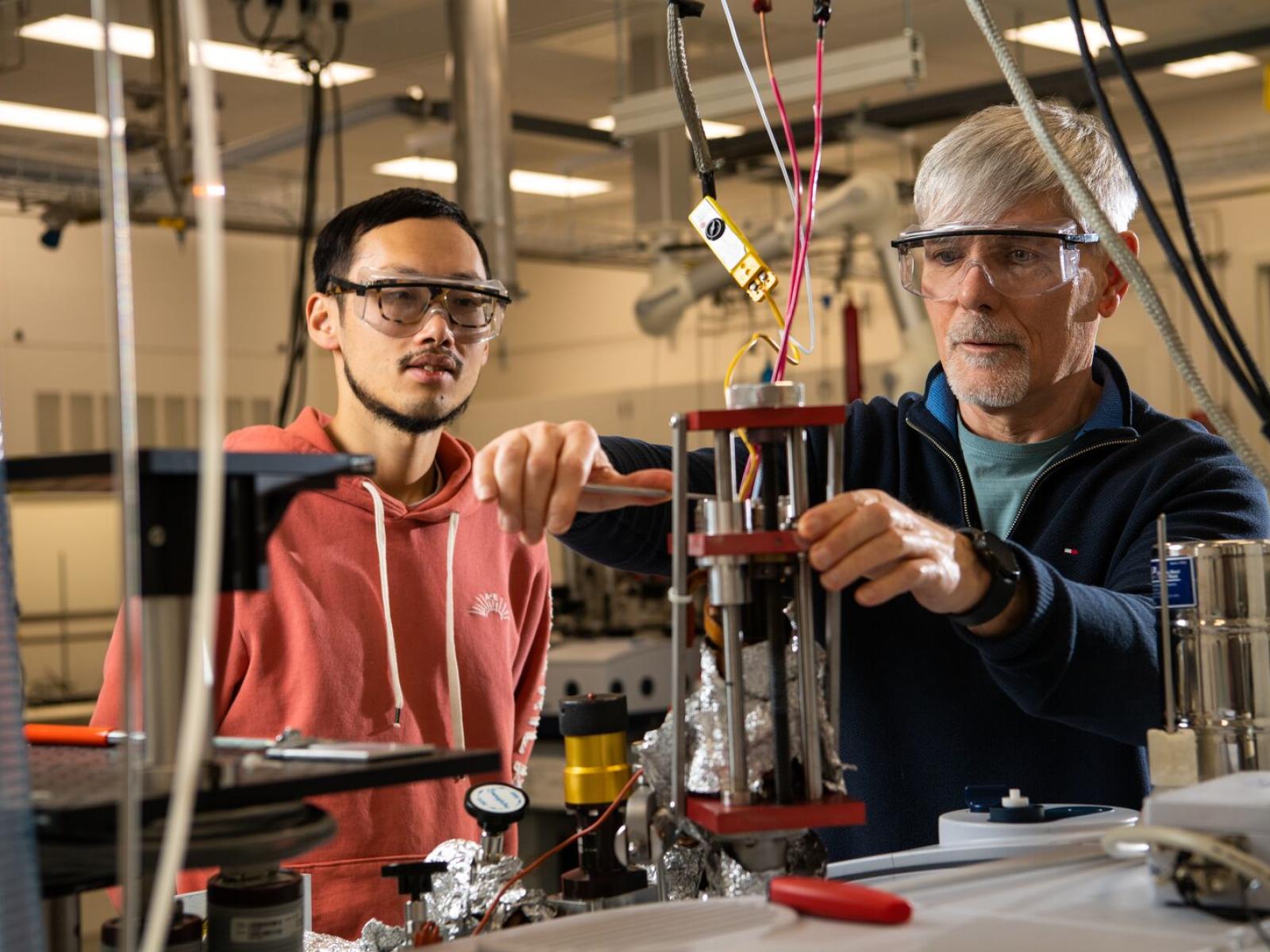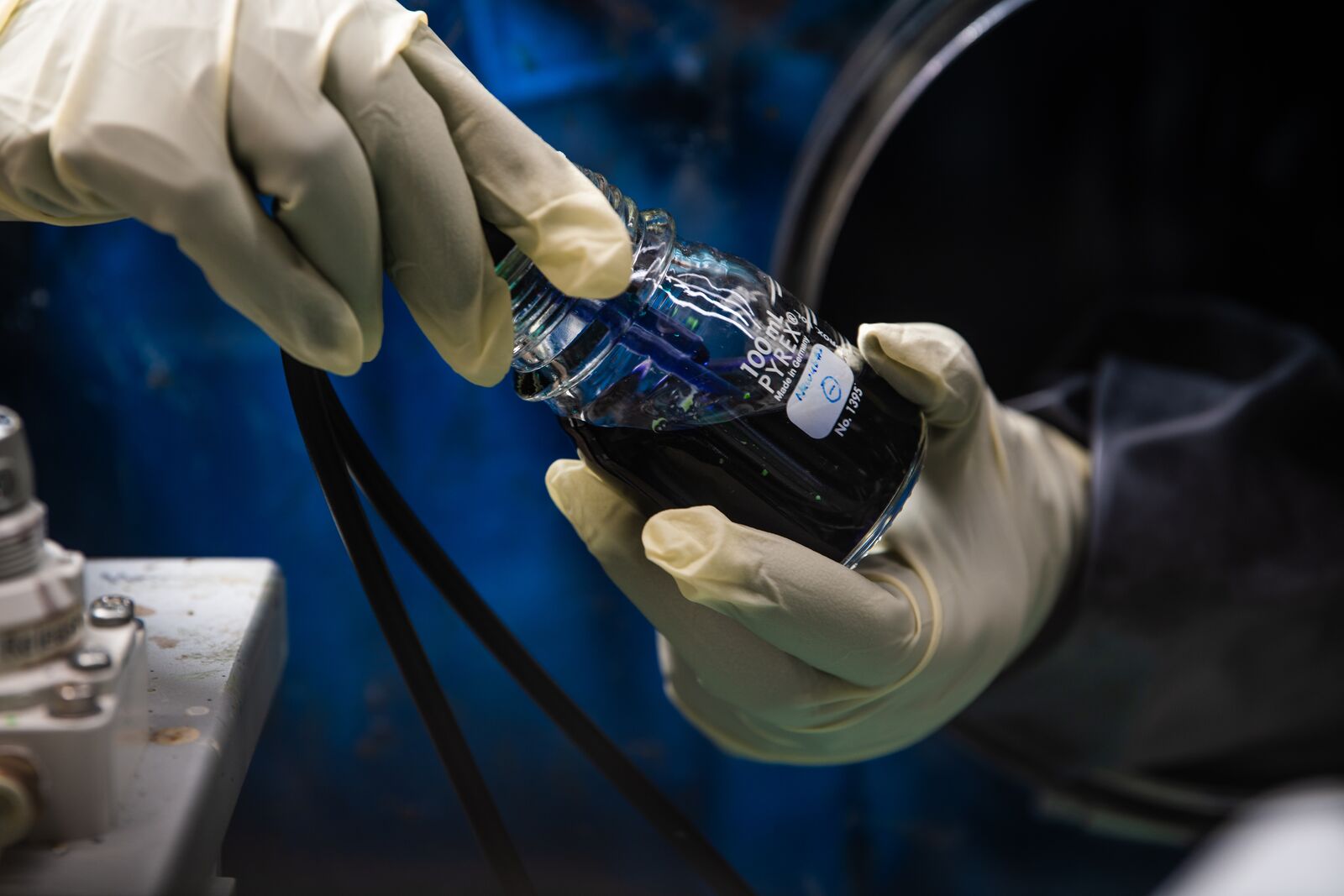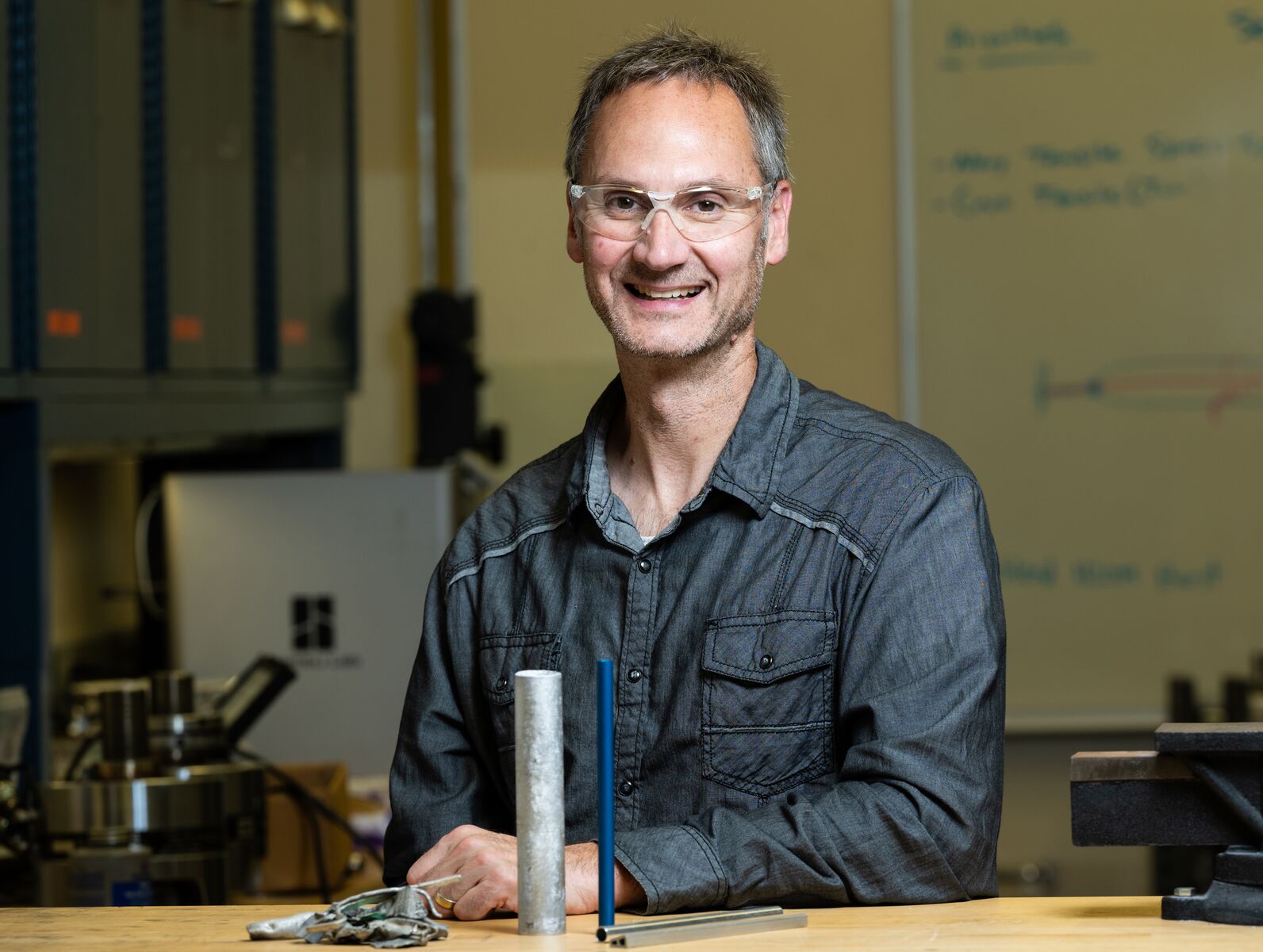From Safer Travel to Tracking Extreme Storms and More: PNNL’s Year-End Review

Chemist Janos Szanyi (right) led a team of researchers that included Linxiao Chen in discovering a promising approach to make it easier to turn petroleum-based plastic waste into chemicals that can be used to produce new materials and fuels.
(Photo by Andrea Starr | Pacific Northwest National Laboratory)
As we enjoy the festivities of the season, it’s also time to reflect upon the past year. As I consider the science and technology contributions of the Department of Energy’s Pacific Northwest National Laboratory, here are a few that might shape future holiday seasons.
Wrapping up plastic: Plastic shopping bags, bottles and packaging for gadgets and toys stack up fast during the holidays. Scientists at PNNL have found a novel way to make it easier to upcycle these plastics into a gasoline-like fuel. Their solution is based upon the combination of two critical chemistry steps.
The first involves breaking plastic’s stubborn chemical bonds. The second employs a catalyst to create new bonds necessary for the desired product. This two-step approach can be completed at lower temperatures than other methods, increasing efficiency and reducing costs.
Charging things up: Batteries are important for keeping our new toys humming, but they also are critical to the clean energy transition. Scientists at PNNL are working to develop better batteries for both the power grid and electric vehicles.
This year, PNNL sweetened the performance of a flow battery for the grid by adding a dissolved simple sugar and achieved the first laboratory-scale experiment to report more than a year of continuous use with minimal loss of capacity.
On the transportation front, a 2023 study focused on addressing the challenges of scaling lithium battery materials production from lab-perfect conditions to the realities of industrial manufacturing.
Keeping travel safe: Building on PNNL technology that is widely deployed in airport security scanners, researchers are working on a new, rotational shoe scanner that could be integrated into body scanners to quicken your step through airport security—without removing your shoes. They also are advancing the technology used in whole-body scanners to improve threat detection.

This year, they incorporated new technology into three scanners being developed and tested by the Department of Homeland Security’s Science & Technology Directorate. This advanced technology, which was retrofitted into a current model and integrated into two new cylindrical scanners, enables next-generation, high-resolution imaging.
Tracking extreme storms: While hurricanes only occasionally interfere with holiday travel, new findings published by PNNL this year are helping us better understand the impacts of global warming, including the extreme weather events it spawns.
Researchers developed a new model that isolated the many factors that shape hurricanes and determined that changes in the winds of the Earth’s upper atmosphere will increase the strength and frequency of hurricanes striking the U.S. Gulf and lower East coasts. This information will help planners design infrastructure that is more resilient in extreme weather.
Protecting the holiday feast: Some may not associate cybersecurity with apples and beef, but the IT systems used to assure the safety and quality of our food supply could be susceptible to cyberattacks.
For example, internet-connected systems help control the refrigerated storage that slows the ripening of fruit, and remote sensors monitor livestock health. To protect these smart systems—and our nation’s cornucopia—PNNL cyber experts are identifying potential vulnerabilities and the consequences a cyberattack might have on our food supply and the economy.

Dashing about sustainably: PNNL materials scientists are working to make automobiles and planes lighter and more fuel efficient. In one example of advancing sustainable transportation, PNNL has patented a new technique for manufacturing vehicle parts from scrap aluminum. This new process can reduce energy consumption by more than 50%, as well as reduce carbon dioxide emissions associated with mining and refining raw aluminum ore by more than 90%.
Collaborating with Magna, North America’s largest auto parts manufacturer, researchers at PNNL have used this process to eliminate metal impurities in the scrap without requiring energy-intensive heat treatment—reducing the cost of recycling aluminum while saving time and increasing efficiency.
These scientific discoveries and technological innovations of 2023—and many, many more—represent the efforts of 6,100 dedicated staff members at PNNL. And on their behalf, I thank you for your support and wish you a most happy holiday season. We are proud to be part of this wonderful community.
Steven Ashby, director of Pacific Northwest National Laboratory, writes this column monthly. To read previous Director's Columns, please visit our Director's Column Archive.
Published: December 26, 2023